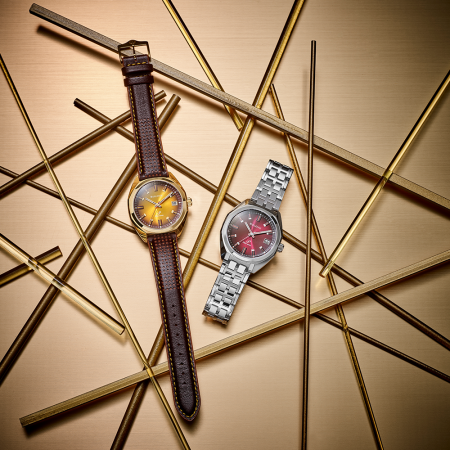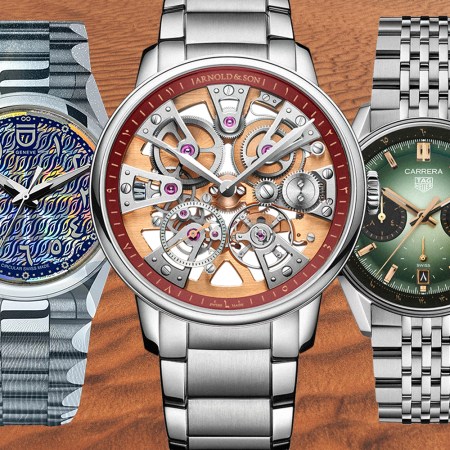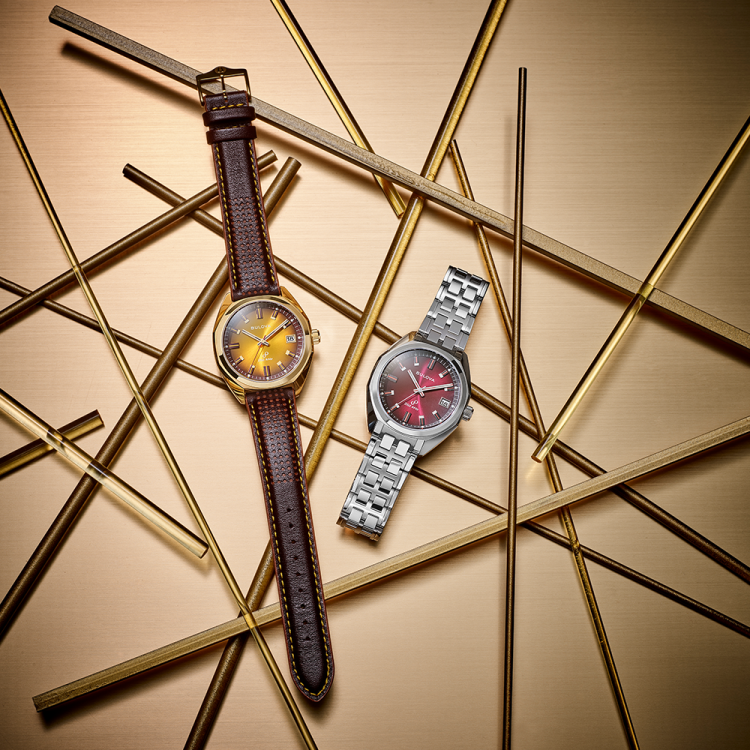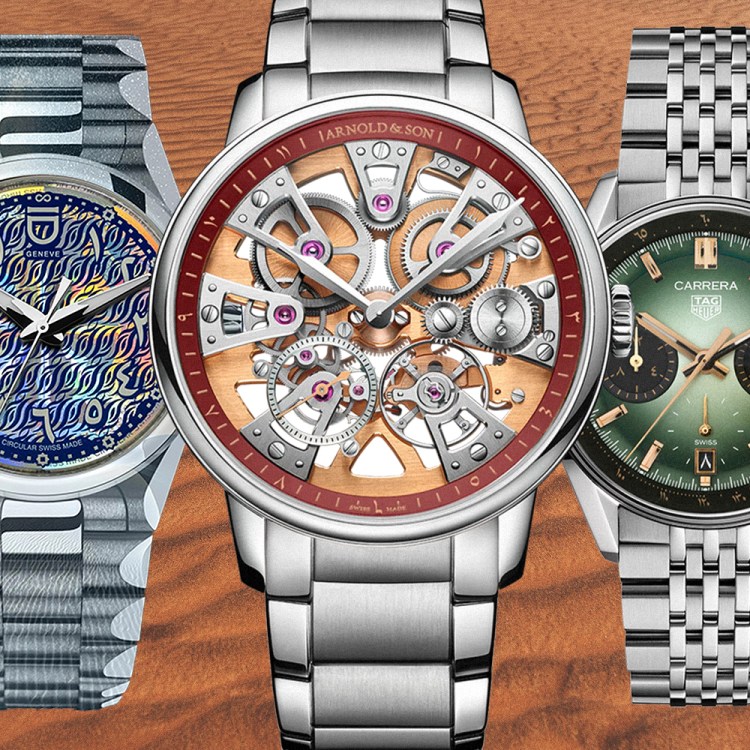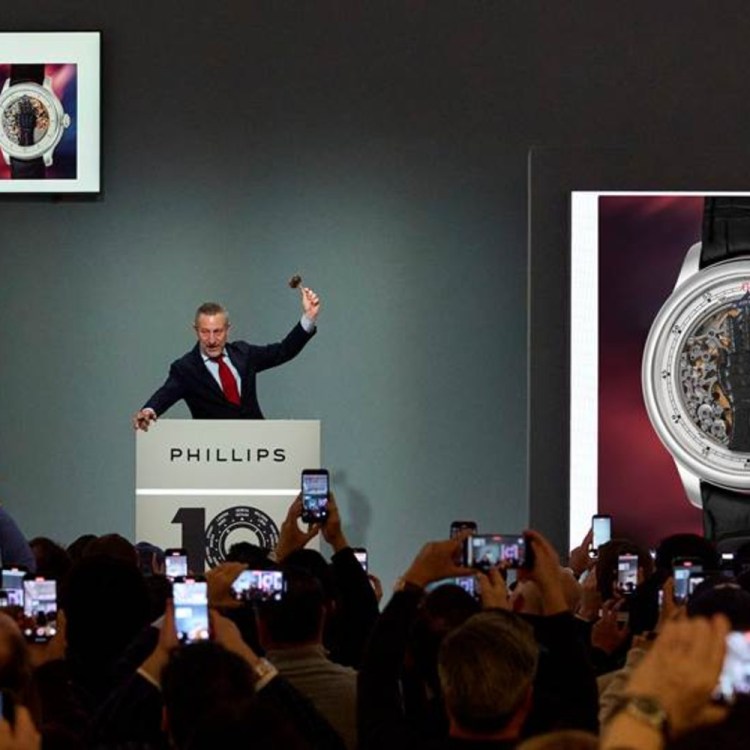The watch industry has undergone gradual but important change over its centuries-long history, and a big part of that change has to do with the thing that makes your timepiece tick.
For many decades — centuries, really — the horological world was a true cottage industry, one in which farmers who were shut in for the winter in the Swiss countryside would turn to clockmaking in their homes. As this process became somewhat industrialized in the 19th century, companies would contract one another to provide the parts which they didn’t make themselves: A movement manufacture, for example, might sell its calibers to a watch company that didn’t make its own, and that company would in turn purchase dials from a third company, and leather bracelets from a fourth. In this manner, many watches were the product of little galaxies’ worth of ateliers.
Gradually, many watchmakers began developing and fashioning their own movements, with some going so far as to move towards near-complete vertical integration. (Rolex, for example, now even produces its own packaging and smelts its own gold.) Following the so-called Quartz Crisis of the 1970s — when cheap, battery-powered technology threatened to do away with mechanical watchmaking — many of these brands moved away from the idea of the in-house movement, instead turning to large suppliers such as ETA and Valjoux. However, long before that inflection point, even large, established brands relied upon specialist movement makers to power some of their complicated flagship products: For example, hand-wound Valjoux calibers powered the Rolex Cosmograph Daytona until the late 1980s, and then automatic Zenith calibers did so until 2000. Likewise, Patek Philippe relied upon Lemania ébauches for many of its famed references.
As mechanical watchmaking gradually gained traction again over the past few decades, watchmakers began trying once more to fashion their own movements, and the term “in-house” started to capture the imagination of collectors. As of 2025, it’s almost a given that a high-end independent brand producing a luxury watch in small batches will design, produce and finish its own movement — although this may not include every component within said movement — and many of the large conglomerates produce them for exclusive use by their constituent brands. Lower-end or microbrands, however, rely upon an ever-expanding list of dedicated movement suppliers, many of which are owned by large conglomerates such as the Swatch Group or Citizen Group.
“Simple Sabotage” — The CIA’s Guide for “Rascally Spies”
America’s WWII advice for citizen saboteurs included telegram tampering and giving bad directions.The horological landscape thus tends to swing, pendulum-like, between the third-party model of the late 20th century and the in-house model of the early 20th or early 21st century. Indeed, today, the collector has a wide variety of choices when it comes to what’s powering their watch, from $10 quartz calibers to mechanical masterpieces worth hundreds of thousands of dollars. What does all this mean for the consumer? Frankly, we think it’s a good thing. Much as the necessary R&D and savoir faire in creating a proprietary movement are impressive, there’s no practical need for an in-house caliber save to show off a watchmaker’s skill — or, if said maker has truly designed a new complication, to power said complication.
Furthermore, the economies of scale that develop when a company like ETA or La Joux-Perret develops and sells its movements to myriad third parties enables brands to offer distinctly affordable watches with relatively luxurious specifications. Plus, these brands are free to tweak these movements — improving their accuracy, adding complications, etc. — to their own liking without having to develop the movement itself from scratch. This is a system in which numerous parties benefit.
Today’s watch companies — both large and small — use third-party movements from Swiss and Asian suppliers such as ETA, Sellita, Miyota, Seiko and others. Dig into the specs of your favorite timepiece and there’s a solid chance it contains one of the following calibers listed here, so it’s a good idea to be familiar with them. Because while in-house movements are surely impressive bits of microengineering, it’s the little workhorses below that power much of the horological landscape, allowing all and sundry the chance to snag an excellent watch at an affordable price.

ETA (Valjoux) 7750
Introduced in 1974, the Valjoux 7750 is one of the most ubiquitous automatic chronograph calibers in the world. Based upon the manually-wound Valjoux 7734 — itself a derivative of the Venus 188 — it’s most famously configured with chronograph totalizers at 6, 9 and 12 o’clock and a day-date display at 3 o’clock, though it’s also available in other configurations. With its cam activation and plastic reset lever, it’s not the most refined of chronograph movements, but this has done little to lessen its reputation in the minds of collectors as one of the most beloved calibers ever devised. Produced today by ETA (into which Valjoux was subsumed), it continues to see service in watches from Hamilton, Tockr, Junghans, Sinn and more.

ETA 2824-2
Chances are good that if you can name a single third-party movement, it’s the ETA 2824-2. Made by ETA SA Manufacture Horlogère Suisse — Switzerland’s largest movement manufacturer and a subsidiary of the Swatch Group — the 2824-2 is the modern evolution of the 2824, an automatic three-hand caliber introduced in the early 1970s that was itself based upon the Eterna cal. 1427. Available in four grades (Standard, Elaboré, Top and Chronometer) in successive levels of increasing accuracy, it features 25 jewels, a beat rate of 4 Hz, a 38-hour power reserve, and optional hand-winding, hacking seconds and a date function. With sales of the 2824-2 once restricted to brands approved by Swatch Group, other manufacturers have stepped in by producing clones.

Sellita SW200/SW200-1
Speaking of clones of the 2824-2, may we introduce the Sellita SW200 and SW200-1. When ETA began restricting sales of their movements to brands within the Swatch Group, Sellita — another Swiss movement manufacturer and, until 2003, an assembly partner of ETA — started building its own calibers based upon expired movement patents. Hence the interchangeability of the 2824-2 and the SW200, though it should be said that these movements’ parts aren’t necessarily perfectly interchangeable, as the two models do have some differences. (For example, the shape of the teeth on certain wheels within the movements aren’t identical.) On the whole, the presence of the SW200 has been a boon to the watch industry at large, as microbrands now have widespread access to a reliable, Swiss-made three-hand caliber again.

Sellita SW330-1
Much as the SW200 is a clone of the ETA 2824-2, the SW330-1 is a clone of the ETA 2893-2, ETA’s Swiss-made “caller” GMT movement with an independently adjustable GMT hand. Automatic and featuring 25 jewels, bi-directional winding, hacking seconds and a 42-hour power reserve, it’s used in a wide variety of GMT watches by brands such as Monta, Mühle-Glashütte, Farer and Steinhart. As is the case with the aforementioned three-hand movements, it’s often used somewhat interchangeably with the ETA 2893-2 to the extent that the end user might be provided a watch with either movement, or you might have the option to choose which you prefer.

Miyota 9075
Unlike the ETA 2893-2 and the Sellita SW330-1, the Miyota 9075 is a “flyer” GMT (or what some refer to as a “true” GMT) with an independently adjustable local hour hand — which makes quickly updating to the local time zone a cinch upon landing in a new locale. Produced by Miyota, a Japanese movement manufacturer owned by Citizen Group, it’s a fairly new movement not yet in use by many brands, but its affordability and feature set will surely see it proliferate throughout the microbrand community in the coming years. Although it doesn’t feature the accuracy of some of the top-grade third-party Swiss calibers — Miyota claims an accuracy of -10 to +30 seconds per day — its specs are nevertheless comparable to those of the SW330-1.

Miyota 9015
Introduced in 2009, the Miyota 9015 could (roughly) be deemed the Japanese competitor to the ETA 2824-2 or the Sellita SW200-1. An automatic 24-jewel movement with a 4 Hz beat rate, 42-hour power reserve, and optional hand-winding and hacking seconds, it’s inexpensive and widely available, meaning that many microbrands offering affordable, entry-level automatic watches use it to power their timepieces. (Zelos, Lum-Tec and Vaer are included in that list.) At 3.9mm tall, the 9015 is thinner than the 2824-2 and the SW200-1, making it more ideal for thinner dress watches or tool watches designed with a slimmer profile in mind.

La Joux-Perret G100
Like Miyota, La Joux-Perret is owned by Citizen Group. Unlike Miyota, however, it’s a Swiss company producing its movements in Switzerland, which results in a distinct set of characteristics. Its relatively new G100 is another rough equivalent of the ETA 2824-2, meaning that Citizen Group has both Asian-made as well as Swiss-made workhorse calibers to offer to third parties. While the G100 shares many characteristics with the Miyota 9015, the former boasts a 68-hour power reserve, a single-piece tungsten rotor, a KIF anti-shock system, an ETACHRON-style regulator system with a fine adjustment screw, and an accuracy of +/- 12 seconds per day. Currently, it’s used by brands such as anOrdain, Farer and Furlan Marri.

Seiko NH35A (4R35)
Wade into the microbrand world, and it’ll be roughly two minutes before you encounter the Seiko NH35A. Dubbed the “4R35” when used by Seiko itself — in its Orange Monster, for example — the NH35A is an automatic three-hand movement with a date function, a 3 Hz beat rate, a 41-hour power reserve, bi-directional winding, and optional hand-winding, hacking and a quickset date. Produced in Japan and Malaysia, it’s used in a wide variety of microbrand and inexpensive watches such as those from Elliot Brown, Vostok and Invicta. Because of its lower beat rate and 5.32mm height, it wouldn’t be appropriate to term it a technical equivalent of the 2824-2 or SW200-1, though it does (somewhat) function this way in the watch market.

Seiko VK/VH Meca-Quartz
“Meca-quartz” is a sort of hybrid technology that uses a quartz crystal and battery like in a standard quartz watch but incorporates a mechanical module to control the chronograph functions, resulting in a battery-powered timepiece with sweep-like seconds and analog pusher feel. Seiko pioneered this technology way back in the early 1980s, and its VK/VH series of movements are now offered to third parties — open a microbrand watch like an Autodromo or a Rue and you might find a VK63, VK67 or VK83, but you’ll also find them in use in Seiko’s own catalog. Relatively affordable and offering a distinct melding of mechanical and battery-powered tech, certain meca-quartz movements boast accuracy of +/- 20 seconds per month.

Ronda 715
Just as important — and perhaps more ubiquitous — than mechanical three-hand movements such as the 2824-2 and the SW200-1 are quartz three-hand calibers such as the Ronda 715. Available in numerous configurations with or without the date, or with or without central seconds, the 715 is among the most common versions and features in watches both dressy and rugged from the likes of Victorinox, Luminox, Bertucci, Bravur, Elliot Brown and Shinola. Powered by a 371-type battery, it features either one or five jewels (depending upon whether it has nickel or gold-plate finishing), hacking seconds, 60-month battery life and an accuracy of -10 to +20 seconds per month. The date window typically features at 3 or 6 o’clock.
This article appeared in an InsideHook newsletter. Sign up for free to get more on travel, wellness, style, drinking, and culture.





